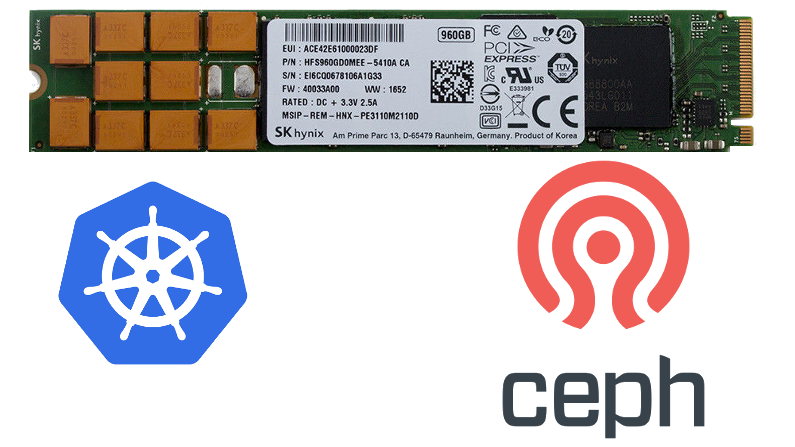Ceph has long been a favourite technology of mine. Its a storage mechanism that just scales out forever. Gone are the days of raids and complex sizing / setup. Chuck all your disks into whatever number of servers, and let ceph take care of it. Want more read speed? Let it have more read replicas. Want a filesystem that is consistent on many hosts? Use cephfs. Want your OpenStack Nova/Glance/Cinder to play nice, work well, and have tons of space? use ceph.
TL;DR: want to save a lot of money in an organisation, use Ceph.
Why do you want these things? Cost and scalability. Ceph can dramatically lower the cost in your organisation vs running a big NAS or SAN. And do it for higher performance and better onward scalability. Don’t believe me? Check youtube
My ceph system at home is wicked fast, but not that big. Its 3 x 1TB NVME. We talked about this earlier, and you may recall the beast-of-the-basement and its long NVME challenges. Its been faithfully serving my OpenStack system for a while, why not the Kubernetes one?
NVME is not expensive anymore. I bought 3 of these. $200/each for 1TB. But, and this is really trick-mode, it has built-in capacitor ‘hard power down’. So you don’t have to have a batter-backed raid. If your server shuts down dirty the blocks still flush to ram, meaning you can run without hard-sync. Performance is much higher.
OK, first we digress. Kubernetes has this concept of a ‘provisioner’. Sort of like cinder. Now, there are 3 main ways I could have gone:
- We use ‘magnum’ on OpenStack, it creates Kubernetes clusters, which in turn have access to Ceph automatically
- We use OpenStack Cinder as the PVC of Kubernetes.
- We use Ceph rbd-provisioner of Kubernetes
I tried #1, it worked OK. I have not tried #2. This post is about #3. Want to see? Lets dig in. Pull your parachute now if you don’t want to be blinded by YAML.
cat <Now we need to create the StorageClass. We need the **NAME** of 1 or more of the mons (you don't need all of them), replace MONHOST1 w/ your **NAME**. Note, if you don't have a name for your monhost, and want to use an IP, you can create an external service w/ xip.io:
kind: Service apiVersion: v1 metadata: name: monhost1 namespace: default spec: type: ExternalName externalName: 1.2.3.4.xip.io and you would then use monhost1.default.svc.cluster.local as the name below.cat <
